FLORIDA KEYS Until last summer, Pickles Reef was seen as a bright spot in the field of coral restoration. The Coral Restoration Foundation, one of the largest reef restoration organizations in the world, had spent the better part of two decades working to breathe new life into this degraded site, outplanting tens of thousands of small colonies of coral, mostly fast-growing elkhorn and staghorn.
Pickles looked relatively healthy, with coral outplants reaching maturity and even beginning to spawn. There was hope.
Then came July and August of 2023, when a relentless, record-shattering marine heat wave triggered widespread coral bleaching and put reefs throughout the Keys in a death grip. Bleaching is a phenomenon in which heat-stressed corals expel the symbiotic algae that they rely on for most of their food and turn ghost-white, often leading to widespread coral mortality. The heat in the Florida Keys was so extreme that in many cases, corals didnt have time to bleach. Instead, they simply roasted to death.
It was around 10:30 a.m. on a sunny Sunday morning this July when scientists and interns from CRF arrived at Pickles, approximately 5 miles off the coast of Tavernier, Florida. As they suited up in their dive gear, Phanor Montoya-Maya, the foundations restoration program manager, announced that the teams primary task was to search for survivors. One by one, the divers stepped off the back of the dive boat and descended to the shallow reef below.
Montoya-Maya and others quickly became fixated on a small group of staghorn corals that theyd planted two years earlier. Somehow, these colonies, situated on an outer edge of the reef, had survived the previous summers heat. Montoya-Maya gave a thumbs-up, signaling his excitement, and then took time to remove several predatory yellow-footed snails, which feast on coral tissue, before he and the others spread out to look for other colonies.
Thats when the scale of the devastation became clear. Those few healthy colonies were outliers. In every direction stretched a field of dead corals, devoid of their once-vibrant color and often covered in green algae. Fish lingered in the rubble as if waiting for their habitat to magically reappear.
During the nearly one-hour dive, the team identified just 28 living coral colonies of just two different genotypes. Everything else they surveyed thousands of corals that had been raised and carefully planted in previous years had perished, the latest victims of the worlds decades-long addiction to planet-heating fossil fuels.

Once dominant throughout Florida, staghorn and elkhorn corals are both in severe decline and listed as threatened under the Endangered Species Act. And despite being the backbone of coral restoration efforts in Florida, there are thought to be more genotypes uniquely diverse in their genetic makeup of the two species now living under the care of reef practitioners, either in on-land facilities or offshore nurseries, than in the wild across Floridas 350-mile reef, according to Montoya-Maya.
As a whole, Floridas reef the third-largest barrier reef on the planet is more a remnant skeleton of its former self than the vibrant ecosystem you likely picture when you think of a coral reef.
It is a coral reef because the structure is still there, Montoya-Maya said. Whether it is a functioning coral reef, that is a different story.
At least for populations of the two branching species, staghorn and elkhorn, Montoya-Maya said, There is a strong argument that functionally they are extinct because they cannot recover and sustain their populations on their own.
The demise of coral reefs is as much an environmental emergency as an economic threat. Sometimes called the rainforests of the sea, reefs are diverse, sensitive and vitally important ecosystems, providing habitat for more than 25% of the planets marine species and ecosystem services valued at $9.9 trillion per year globally . In Florida alone, reefs support approximately 70,000 jobs, primarily in tourism and recreation, account for $4.4 billion in annual sales and protect over $560 million worth of infrastructure by absorbing wave energy during storms, according to the National Oceanic and Atmospheric Administration.
The situation in Florida and around the globe has some coral scientists confronting a dark reality: Coral restoration, which started as a noble endeavor back when humans werent this far down the road of climate breakdown, is bearing little fruit. It has failed to keep up with wave after wave of loss, yet remains the bulk of whats being done to help ailing reefs. And scientists in the field are scrambling to figure out what comes next, with no clear consensus.
What we were doing 10 years ago was working, and it was the strategy that we could do at the time, but things are changing fast. This year, in particular, should have been a wake-up call to everybody, said Ken Nedimyer, who founded CRF in 2007 but left in 2017 to start another outfit called Reef Renewal USA. What we were doing and are doing is not going to work. Weve got to do something different.
To rinse and repeat, he added, the results are going to be exactly the same, which is failure.
Once a cottage industry, reef restoration that is, propagating, growing and outplanting corals to rebuild damaged and degraded reefs is now a multibillion-dollar global campaign , much of it rooted in the techniques of early pioneers like Nedimyer.
South Florida has become a global epicenter of this work, with tens of millions of dollars and dozens of organizations, universities and state and federal agencies working to reverse the damage and buy time for corals until the world can rein in the use of planet-warming fossil fuels and other threats.
But if success is measured in the amount of coral living on the reef, the monumental endeavor in South Florida is in dire straits.
People have been saying buying time for a quarter century. You cant buy time forever. It seems like you bought that time, and now time is up.
John Bruno, a marine ecologist at the University of North Carolina at Chapel Hill
When it comes to the threat of human-caused climate change, the worlds fragile reefs are often described as the canary in the coal mine.
If the coal mine is the Keys, the canary is dead, said Bill Precht, a veteran coral scientist based in Miami.
Even before last summer, upwards of 90% of coral on Floridas reef had vanished due to warming temperatures, pollution and sediment runoff, disease outbreaks stony coral tissue loss being the worst of them and other threats. Coverage of stony corals, those that build hard skeletons and are the foundation of Floridas 350-mile reef, was around just 2%, down from historical levels of 30% to 40%.
Last years record-shattering heat took another big bite out of what little coral remained, both on the reef and in offshore nurseries.
We lost a lot. We cant sugarcoat it, said CRF spokesperson Alice Grainger.
In 2019, NOAA launched Mission: Iconic Reefs , a multimillion-dollar project to restore nearly 70 acres across seven reefs in the Keys, with the ultimate goal of reaching an average of 25% coral cover at those sites by 2040 up from a measly 2%. To date, the phased project has almost exclusively focused on planting fast-growing elkhorn and staghorn to rapidly increase coral cover. The plan was to eventually shift to planting slower-growing stony corals, including brain, star and boulder corals, to boost diversity across the reefs.
Prior to last summer, project partners had outplanted 31,800 elkhorn and staghorn corals one-quarter of the projects Phase 1 target across a combined 18 acres spanning six separate reef sites, according to Katey Lesneski, the research and monitoring coordinator for Mission: Iconic Reefs.
But when NOAA surveyed five of the project reef sites earlier this year, the findings were grim. Less than 22% of the approximately 1,500 staghorn outplants the agency assessed had survived the heat, while less than 5% of roughly 1,000 elkhorn outplants were still alive.
Lesneski stressed that those findings do not necessarily correlate with mortality across Floridas reef, but acknowledged that last summer was a significant setback for Mission: Iconic Reefs and reef restoration in Florida as a whole.
It is daunting to look down the barrel of the effects of climate change, but there is so much we can actually learn from the impacts of last summer, she said.
In a paper earlier this month, NOAA reported that only 37 of 160 known genotypes of elkhorn coral survived the 2023 bleaching event a loss of 77% in a single season. All that remain are located on reefs in the upper Florida Keys, north of Key Largo, which were spared the worst of the marine heat wave.
NOAA called it a dramatic loss of a once ubiquitous and iconic reef coral.
This Is Not The Future
On a balmy Saturday morning last month, Ken Nedimyer shuffled between saltwater tanks behind his home, tucked in a densely wooded property in Tavernier. He pulled out flat trays, one by one, made of PVC pipes and resembling the solar wings of a satellite that were loaded with brain and star corals.
Nedimyer propagated these small corals in his backyard via a process called fragmentation, in which larger coral colonies are cut into smaller pieces to make new ones. That day, he would be relocating them to his nursery off the coast, where if all goes well theyll grow for several months in tree-like structures made of PVC and tethered to the ocean floor before eventually being planted on the reef.
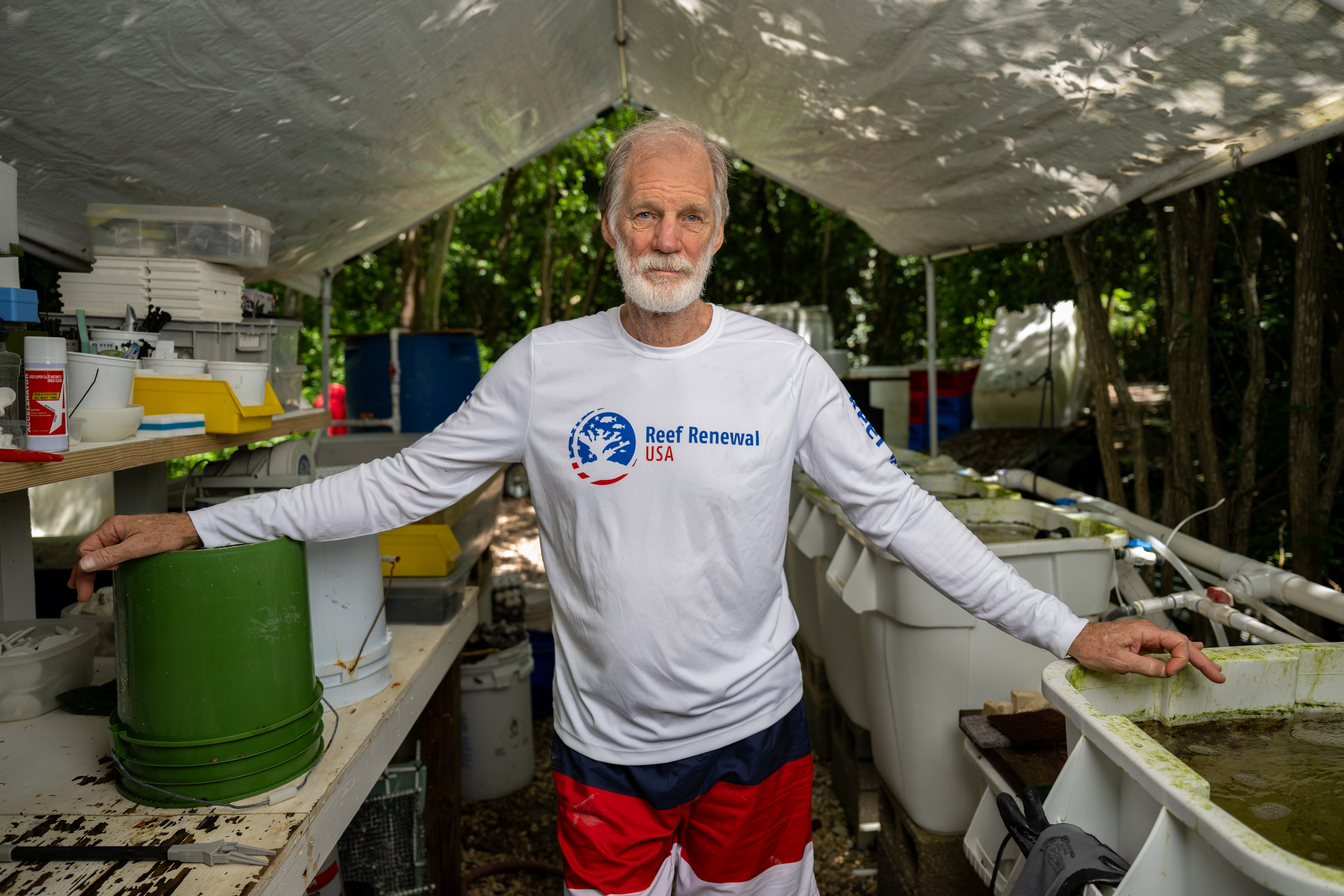
Nedimyer has been described as a father of reef restoration , having developed numerous techniques to propagate, raise and outplant a variety of coral species, including elkhorn and staghorn. But his at-home facility wasnt always dedicated to helping Floridas imperiled reefs.
For 30 years, beginning in the late 1960s, Nedimyer worked in the aquarium fish trade, collecting all manner of tropical fish from Floridas reefs to be sold around the globe. The job paid well, allowing him to put his children through college and build a home just a short walk from the ocean he fell in love with as a young man. But in the 1980s, he started to notice dramatic changes unfolding across the reef. Corals were dying and fish were disappearing. Then, in 1998, Floridas reef the only barrier reef in the continental United States got hammered during the first-ever global mass bleaching event.
For Nedimyer, the event was the first of many big wake-up calls about the mounting crisis facing this vital ecosystem. It took nearly a decade for him to make the leap, but he eventually walked away from selling tropical fish to work full-time on restoring the reefs upon which those fish and communities throughout the Keys rely.
I went from being a consumer of the resource to somebody trying to put Humpty Dumpty back together again, he told HuffPost. I realized my fishery is going down the tubes and I just felt like I needed to do something about it, so I left a very lucrative fishing job to become a poor conservation coral scientist.
His strategy, however, shifted dramatically in the wake of last years apocalyptic summer. While he and other coral practitioners managed to preserve a lot of genetic diversity by evacuating hundreds of individual colonies from offshore nurseries before they died, the weeks-long bleaching event erased years of restoration work at several sites and obliterated whole nurseries of corals that were destined to be transplanted onto the reef.
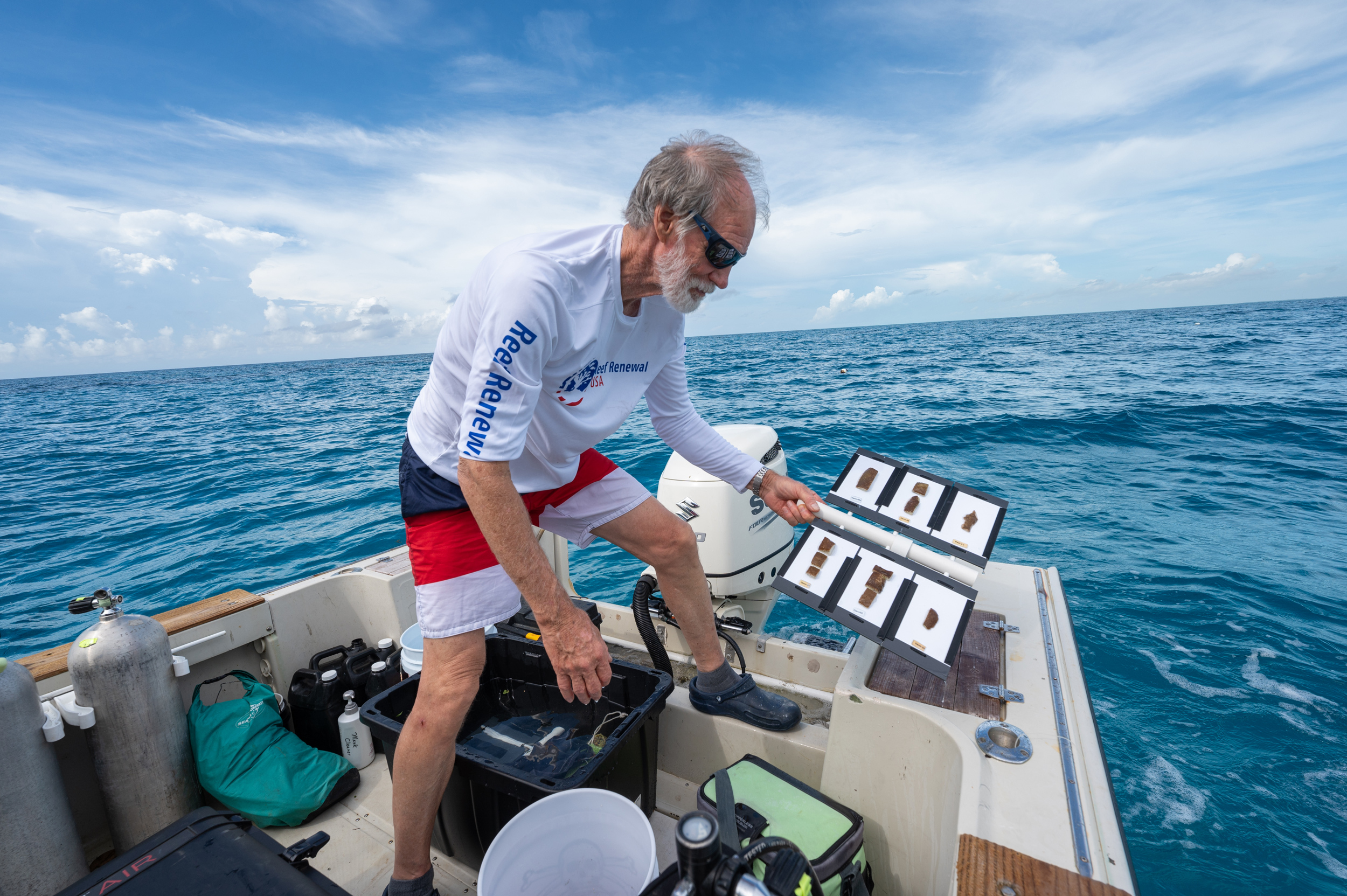
Its around 10 a.m. when we pull up to Nedimyers nursery, located 3 miles off the coast of Tavernier and just a stones throw from where he once operated a live rock nursery for the aquarium trade. Storm clouds rumble in the distance, and from the boat, you can see tree-like structures of corals, arranged in a tidy grid, bobbing beneath the turquoise water.
Before we suit up in our dive gear, Nedimyer carefully places the trays full of golf ball-sized corals overboard. They slowly sink before coming to rest on the sandy ocean floor. Once hes in the water, Nedimyer retrieves the trays and, one by one, attaches them like limbs on a tree to the PVC structures tethered to the sea floor.
The nursery is as impressive as it is dystopian. Thousands of individual corals, many of them imperiled species, hang from plastic piping, creating a reef habitat where one did not previously exist. Nedimyer and his team have meticulously tended this and other coral nurseries in hopes of restoring an ecosystem that has largely vanished in a single generation.
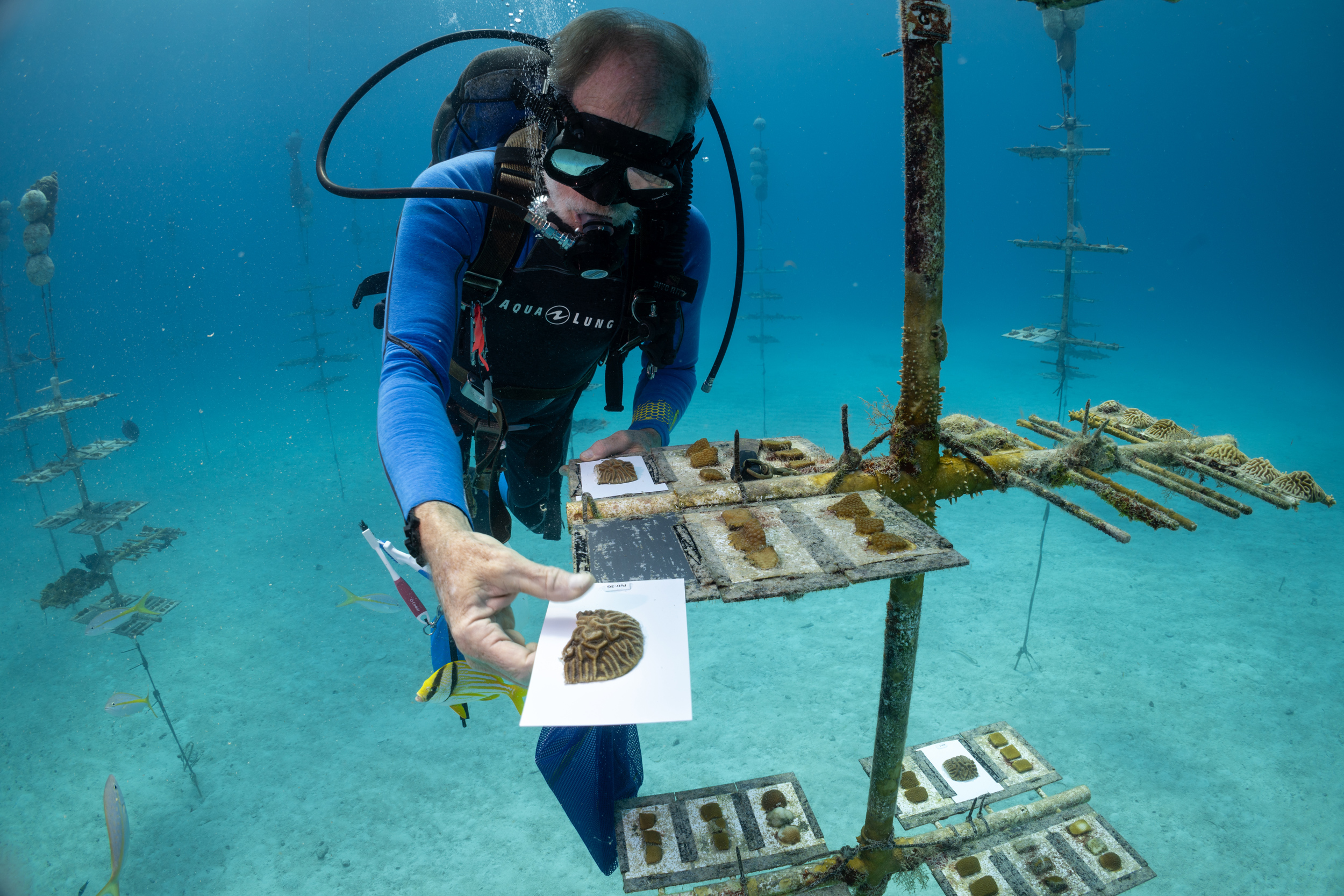
Nedimyer signals me over to one of the coral trees and points out large, healthy brain corals that survived last years record-shattering heat. In an underwater notebook, he notes that these hearty colonies will be used as breeders for sexual reproduction. With a chisel and brush in hard, he bounces from one structure to the next, scraping off algae and other microorganisms that have settled on and can smother the corals. It is a tedious and constant part of maintaining an offshore coral nursery.
As he works, yellowtail snapper and hogfish move in for an easy meal. Above us, a large barracuda circles near the boat.
Back on his 40-year-old Boston Whaler, Nedimyer reflects on last year, when he was scrambling to move nursery corals into deeper, cooler water and into land-based facilities to preserve their unique genetics. While some of his corals bleached, most survived the onslaught of heat. Still, the event led to a lot of soul-searching and, ultimately, a major pivot for Reef Renewal, he said.
This is not the future, he said.
Cant Buy Time Forever
The collapse of coral in Florida is just the beginning of what the planets reefs are facing in a warming world.
To fly over shallow reefs off the coasts of Australia, Brazil, Mexico, Fiji, Seychelles the list goes on in recent months would have revealed shades of white peeking from beneath the waters surface. It is the color of ecosystem-wide carnage.
In April, U.S. federal scientists declared that the planet is experiencing a global coral bleaching event only the fourth such event in recorded history. Since February 2023, large-scale bleaching has been documented in at least 70 countries and territories, in every major ocean basin, according to NOAA and the International Coral Reef Initiative. It is all likely to go down as the worst global bleaching event on record, with 75% of the worlds reefs having already been impacted.
The threat facing corals has changed dramatically over the last two decades as marine heat waves have become more frequent and severe. And some scientists are now questioning whether reef restoration is worth the effort, at least in its current form.
It doesnt seem to be effective, John Bruno, a marine ecologist at the University of North Carolina at Chapel Hill, said of restoration. People have been saying buying time for a quarter century. You cant buy time forever. It seems like you bought that time, and now time is up.
Bruno hesitates to throw stones at coral restoration scientists. He has many friends who work in the field, people he described as extremely dedicated to making a difference for reefs. But at this point, Bruno sees restoration as little more than a desperate and largely failed attempt to intervene in the face of mounting catastrophe.
Its an impossible problem, Bruno said. The only way to make a difference is cutting greenhouse gas emissions.
Failing to do so will doom reefs around the globe. In a landmark report in 2018, the United Nations warned that at just 1.5 degrees Celsius of warming above preindustrial levels a mark that the planet is forecast to surpass as soon as 2027 between 70% and 90% of all reefs could be lost. At 2 degrees of warming, 99% of reefs could perish.
The worlds oceans have spared humanity the worst impacts of climate change, absorbing an estimated 93% of the excess heat from planet-warming emissions. But there are signs that the oceans are reaching a tipping point, as Johan Rockstrm, director of the Potsdam Institute for Climate Impact Research, explained during the United Nations annual World Oceans Day in June.
We are worried that this may be the first sign of an Earth system starting to lose its resilience, he said, displaying a graphic of off-the-charts global sea surface temperatures in recent years. We know the impacts. The impacts are devastating across many of the marine ecosystems across the world.
False Sense Of Hope
For more than two decades, coral scientists have been sounding the alarm that planetary warming poses the greatest threat to reefs around the globe, yet the plight of reefs and the communities that rely on them has done little to speed up the worlds transition away from fossil fuels.
Here we are, 25 years later, and were in the same hell, Precht told HuffPost.
Scientists have eyed myriad radical and desperate measures in hopes of giving corals a fighting chance everything from cloud seeding and installing in-water shade tents above coral colonies to exposing corals to specific sound waves and, more bizarrely, curcumin , a substance found in turmeric spice. But the primary effort has been restoration, including farming corals in both land-based and offshore nurseries, selectively breeding corals in hopes of boosting their tolerance to heat and other stressors, and outplanting corals on degraded reefs.
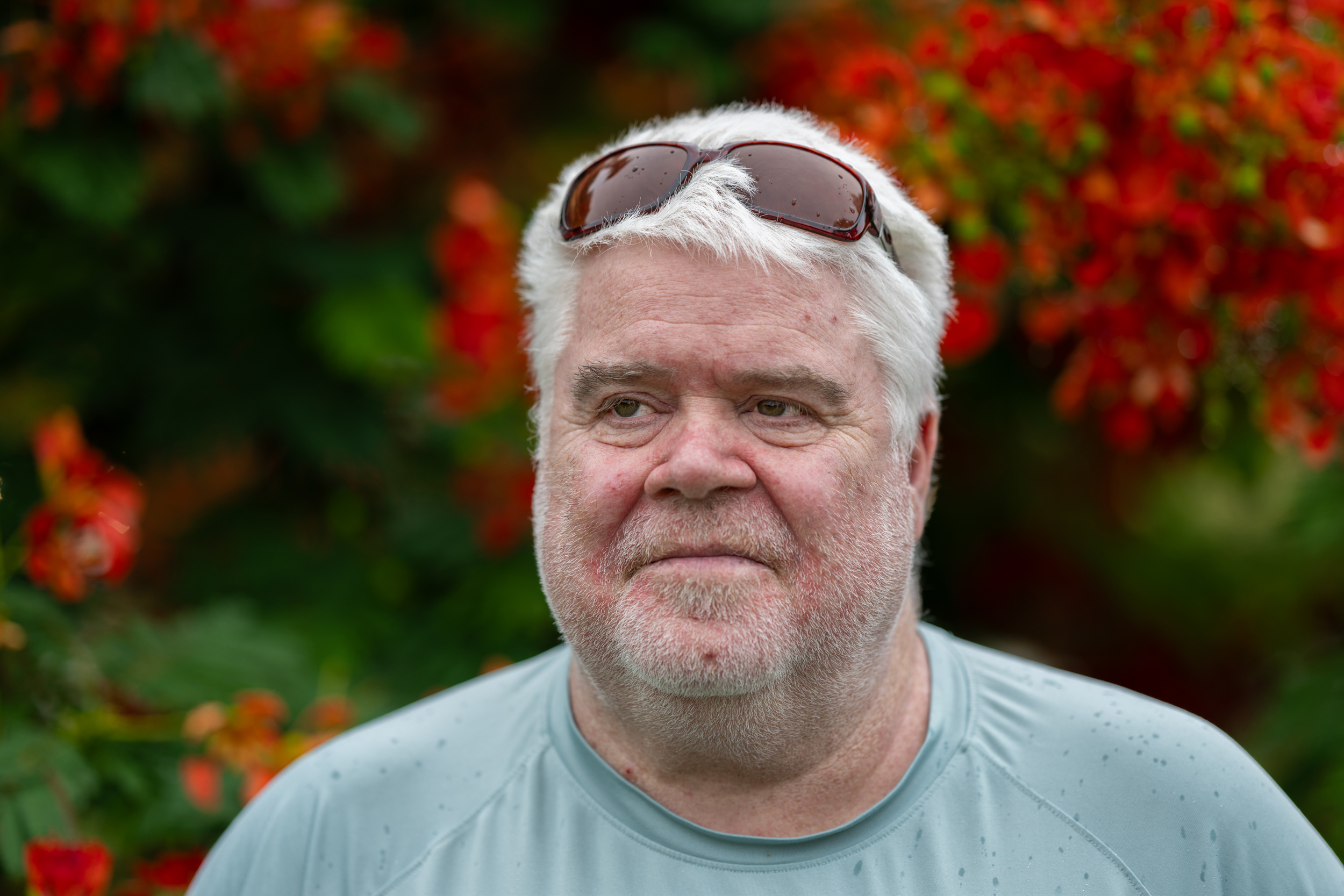
Precht, Nedimyer and other coral experts HuffPost spoke to voiced frustration with the amount of feel-good messaging from restoration organizations, government agencies and media, often focused on some new tool or strategy that could prove key to saving coral reefs. It is a narrative that distracts from the climate-driven crisis facing reefs, giving people a false sense of hope, they say.
Dont overpromise and underdeliver, because then you lose credibility, Precht said. You better be able to pull it off, because if you dont, people are going to say, Well, what are you doing with our money?
Three Australian coral and climate scientists made a similar argument in a paper published in Nature Climate Change last month, writing there is little compelling evidence that active interventions improve outcomes for coral reefs and warning that restorations growing popularity could place undue optimism in scientific and technological abilities.
We believe coral restoration may be, at best, a feel-good measure that satisfies a human urge to do something about climate change and at worst, a dangerous distraction from climate action, the researchers wrote in an accompanying op-ed published in The Conversation. A fundamental rethink is needed.
One of the biggest challenges with reef restoration, or any intervention for corals, for that matter, is scalability. Reefs cover about 70 million acres globally, an area larger than the United Kingdom. Between 2009 and 2018, approximately 14% of the worlds coral was lost, according to the United Nations most recent global status assessment.
In a paper last year, internationally renowned Australian coral scientist Terry Hughes and others concluded that it would require outplanting 1 billion corals, each 1 square foot in size, to increase coral cover on the Great Barrier Reef by 1%. The median cost of coral restoration projects ranges from $50,000 to $1 million per hectare, an area equal to roughly 2.5 acres, they found.
The Great Barrier Reef is the size of 70 million football fields. The total area of coral reef partially restored globally over the past 30 years is about 3-4 football fields, and it has cost a fortune, Hughes wrote on X earlier this month in response to a Financial Review story that asserted scientists are making huge advances in restoring the Great Barrier Reef through an initiative to collect coral sperm and eggs during spawning events.
At the end of the day, there is no quick fix. The overwhelming consensus among coral experts and climate scientists is that without deep, rapid cuts in global carbon emissions, reef restoration will be for naught.
If we dont stop and get our act together on carbon dioxide, methane and all the carbon inputs into the atmosphere, no amount of fussing with corals and breeding them is going to give us a coral reef in 50 years, Nedimyer said. Were going to have corals on reefs, but were not going to have a coral reef.
Mark Eakin, the former longtime coordinator of NOAAs Coral Reef Watch, agrees. Unless and until the world can get fossil fuel-driven climate change under control, restoring huge swaths of coral reef only to watch them die again is probably not what we need to be thinking about, he said.
Since retiring from NOAA in 2020 after nearly 30 years at the agency, Eakin has spent much of his time promoting electric vehicles and pushing governments and businesses to move away from fossil fuels his way of continuing to be part of the solution.
The best way that I can take action to protect coral reefs is by addressing climate change, he said. Thats what its become. And I can certainly understand how other people have fallen into this same space. Were at the point where the things we used to be able to do arent enough.
The Right Corals
Moving forward, Nedimyer has no plans to evacuate corals the next time water temperatures soar; if they are going to die, hed rather find that out sooner than later. He refuses to continue planting large numbers of staghorn and elkhorn corals, which he sees as an inevitable death sentence given their sensitivity to the increasingly extreme conditions. In fact, since last summer, hes either walked away from or renegotiated grants that were earmarked for outplanting staghorn and elkhorn.
The whole thing has changed. The reefs just arent going to look the same, he said. I think just putting a whole bunch of the same shit that we have, thats demonstrated it cant make it, on the reef is folly.
Why dont we invest our time in growing something, developing something that will live through the next major bleaching event?
Nedimyer argues Mission: Iconic Reefs should take staghorn and elkhorn off the table for restoration, at least until heat-tolerant strains can be developed, and instead invest resources in slower-growing species that fared better during last years bleaching, including brain, massive and boulder corals.
That strategy would effectively flip the project upside-down. And without being able to lean on fast-growing branching corals, the missions goal of reaching 25% coral cover by 2040 would likely be out of reach.
Lesneski of Mission: Iconic Reefs said that while it is too early to tell if the projects coverage targets and timeline require amending, those discussions are underway.
We do know that it absolutely does make the most sense to focus on these other types of corals right now while we continue the search for more resilient or resistant clonelines or genets of the elkhorn and the staghorn that we think will do well under these unfortunately increasingly warmer conditions, she said.

Reef Renewal plans to focus its energy on corals that, for whatever reason, survive extreme heat events, propagating a greater diversity of coral species, and rearing larger coral colonies that, once planted on the reef, have a better shot at survival.
The ones that didnt bleach, those are the ones were going to invest in, those are the ones were going to breed, Nedimyer said. Were trying to learn as much as we can from the heat. Were trying to find the corals that are going to make it. If I put a coral on the reef and somebodys paid me to do that, I want to be able to look that investor in the eye and say, I put the right coral out there. I didnt just take your money, Im putting a coral out that I think is going to make it.
And if we dont have them, were going to make them, he added, referring to breeding corals that are heartier and more resilient to heat and disease.
In a rather fitting twist, one of the biggest names in Floridas aquarium fish trade, Marty Tanner, recently swooped in to help Nedimyer see that vision through. Tanner, a longtime former president of the Florida Aquaculture Association, recently donated one of his companys giant indoor facilities for Reef Renewal to breed and grow corals for future outplanting. Located in Ruskin, Florida, the facility has three 30,000-gallon tanks ready to go, with nine more that will be outfitted, and a full staff standing by to run it. There, Reef Renewal will be able to stress-test corals, exposing them to the sort of heat that they are facing in our warming world, with the goal of boosting their tolerance.
Nedimyer has applied for a sizable federal grant to run the on-shore facility. Reef Renewal transported the first 800 coral colonies to the facility in mid-July, and by 2027, expects to churn out 300,000 hearty, tennis ball-sized corals of multiple different species annually a scale that Nedimyer says would be a game-changer for trying to repopulate Floridas reefs with what he calls the right corals.
Im more excited right now than Ive been in a long time, he said.
A Global Responsibility
While Reef Renewal works to move much of its operation on land, CRF sees value in continuing to rear corals in offshore nurseries and large-scale outplanting, where colonies are exposed to real-world disturbances.
Montoya-Maya called it a numbers game. If, for example, you plant 1,000 corals and only 10% survive a future bleaching event, those outliers become the focus and foundation of future work.
Since last summer, CRF has halted outplanting in order to focus on propagating corals to rebuild its nursery stocks. It also renegotiated its grants, all of which had outplanting components, to shift to coral propagation and planting a broader diversity of species.
CRF expects to resume outplanting elkhorn and staghorn corals in October and November, after summer water temperatures typically peak. When it does, CRF will focus on what Montoya-Maya calls pockets of hope like the one he found during the July dive at Pickles, where colonies survived last years crushing heat.
Were going to continue outplanting, as we move forward in those locations that were finding those survivors, until we crack that code of why some sites do better than others, he said.
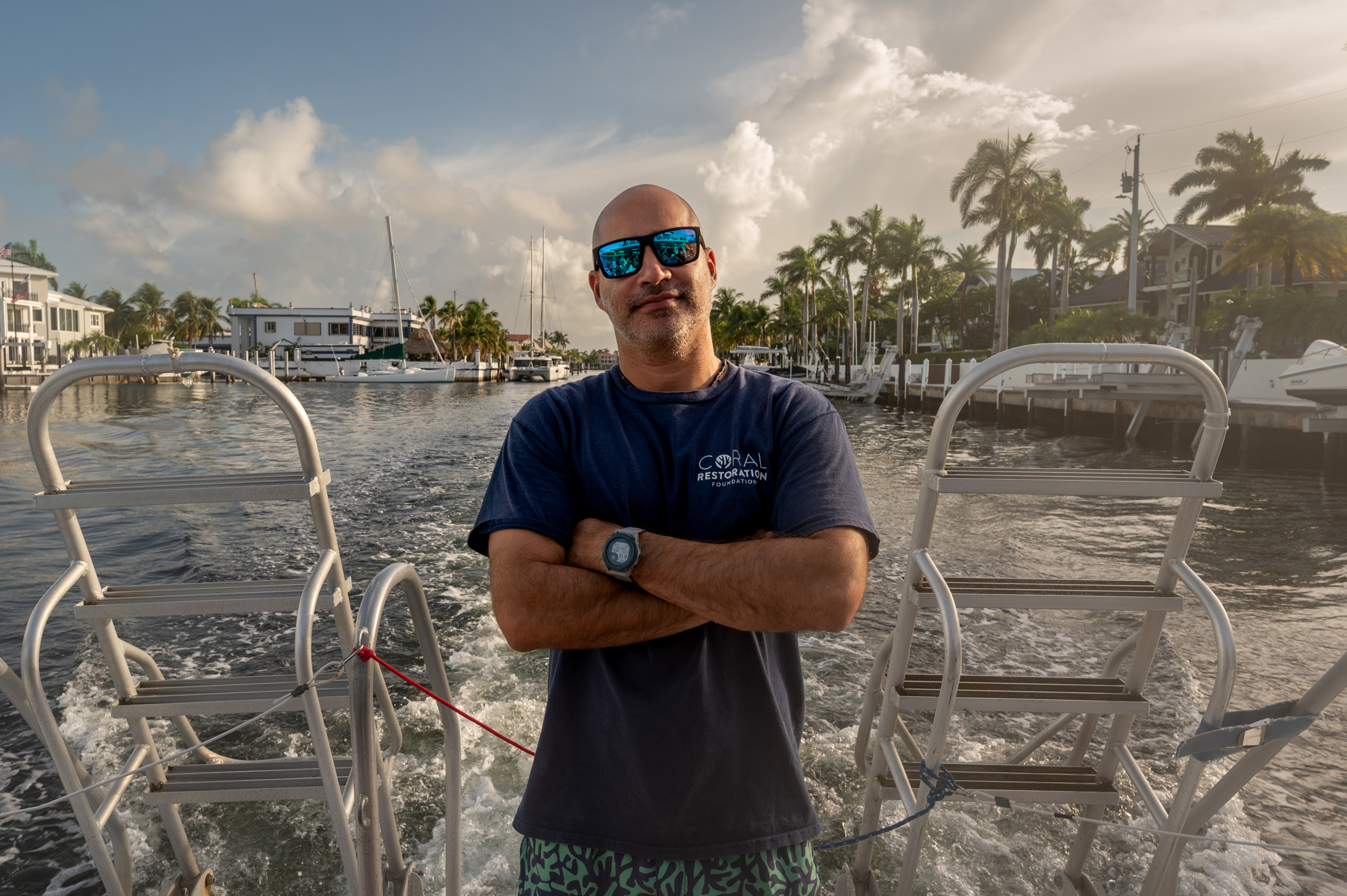
Lesneski understands why some are questioning the field of coral restoration. Her position is that any coral planted on a degraded reef is worth the effort, even if it only lives for one year.
During that year, it was contributing to the ecosystem, contributing to the ecosystem services that coral reefs provide us, everything from biodiversity to shoreline protection to being something beautiful on the reef that people collectively spend billions of dollars on in Florida to come see every year, she said. If that coral was not planted, the reef essentially would have been worse off because there is not a lot of natural recruitment or wild growth of corals in the Florida Keys at this point.
If spending time with coral practitioners shines light on anything, its that they remain resilient in the face of devastating loss.
Theyve spent 20 years building up an extensive coral gene bank, without which theyd have little to work with, and have pioneered new techniques to breed and grow a diversity of species both offshore and in aquaria.
Nedimyer said the restoration community has a lot of tools in its toolbox. Hes hopeful he and other scientists will be able to find a way to speed up what would otherwise be a slow evolutionary process.
We need to try to accelerate that if we can, and see if we cant develop strains of corals that can live in warmer water, he said. If we dont do something, if we dont do what were doing right now, then were completely walking away from it. And we have an opportunity to do something. Right now is some of the last opportunities were going to have to do some of this genetic preservation and to start looking at some of these things.
Im not ready to quit, he added, but Im ready to accept defeat in some areas and look in other areas and go in different directions.
Precht pins his hopes on the next generation of coral scientists and emerging technologies, including artificial intelligence and gene editing. He gets excited just thinking about where technology could take coral restoration over the next 20 years.
We stand on the shoulders of the people before us, and weve got to learn from their mistakes more than their successes, he said. Im not giving up hope on the future or restoration.
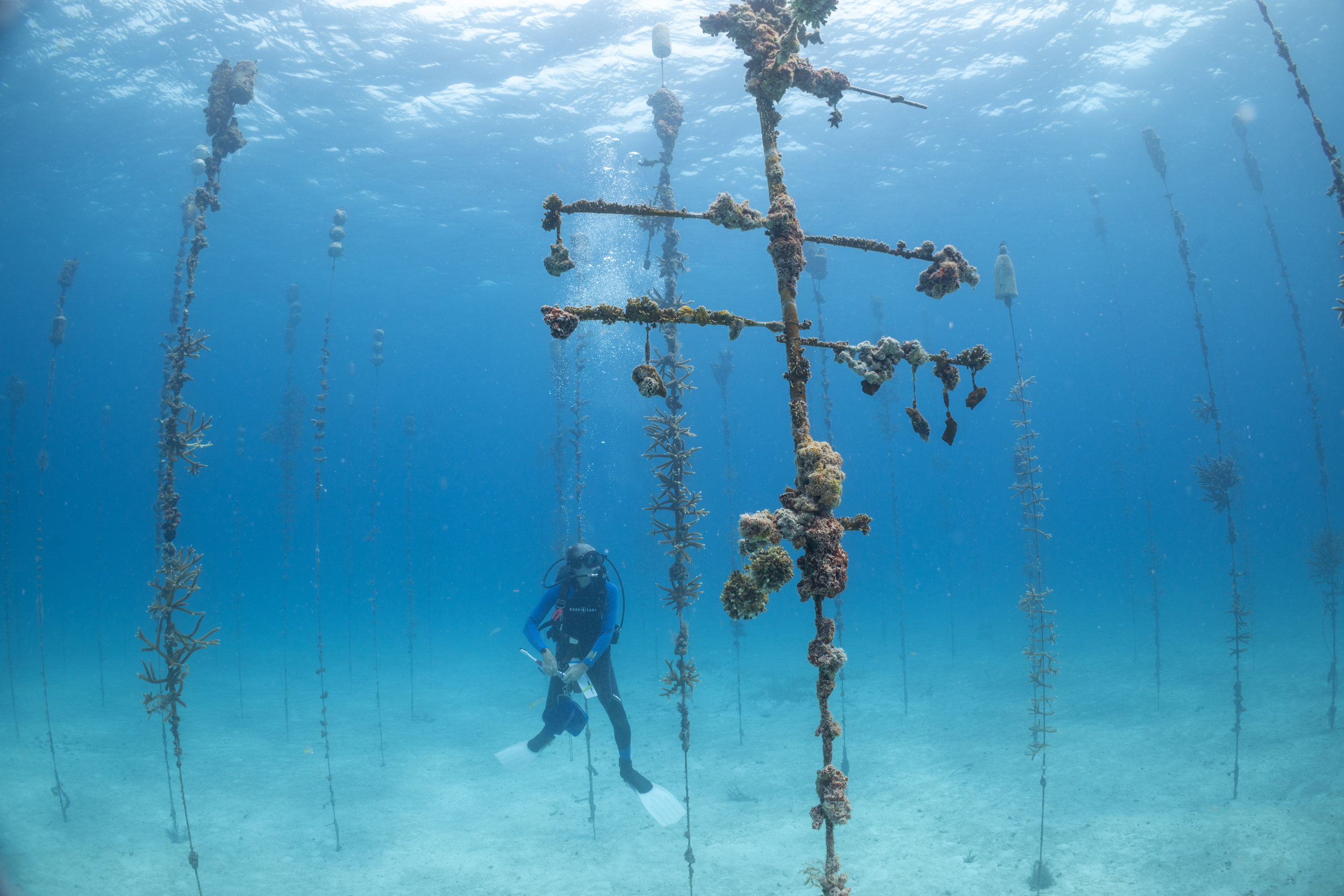
Grainger of CRF stressed that safeguarding the worlds reefs is a global responsibility.
We cant be looking at organizations like CRF to science our way out of this problem, she said. Were continuing to advance the field of restoration, to bank and safeguard the genetic material that we need to restore resilient reefs; at the same time, we have to get the rest of the world on board with this and say, Look, we need to fix climate change. We need to work toward a carbon-negative future.
What we can do is make sure that coral reefs have a future once the rest of the world catches up with actually how serious this situation is, she added.
But the global fight against climate change continues to face strong political headwinds. Despite having a front-row seat to the impacts, Florida Gov. Ron DeSantis (R) for months ignored last years deadly marine heat wave and bleaching event, at least publicly, as HuffPost previously reported . And in the wake of the crisis, he signed a bill to deprioritize state climate initiatives and erase most mentions of climate change from state law a measure that Miami meteorologist Steve MacLaughlin dubbed the Dont say climate change law.
Yet DeSantis says safeguarding Floridas reefs is a top priority. In January 2023, he signed an executive order establishing Floridas Coral Reef Restoration and Recovery Initiative, which set the lofty goal of recovering no less than 25% of Floridas Coral Reef by 2050.
During a press conference in the Florida Keys in June to highlight his administrations investments in coral restoration and recovery, a reporter asked DeSantis about deadly marine heat waves and whether hes concerned that they will lead to an outflowing of necessary money for coral restoration projects.
Well, look, I mean, we obviously cant control the temperature of the water, he said. But the reality is we look to see issues and we try to address them. Sometimes resources are important, sometimes theres policy changes that need to happen. In this case, I think its something that the investments been important, and I think its something that we want to continue to do.
But without government policies to aggressively combat a global threat that DeSantis is hell-bent on not talking about, coral scientists will be left to keep spinning their wheels while reefs in Florida and around the globe vanish.
Support Free Journalism
Already contributed? Log in to hide these messages.
Support Free Journalism
Already contributed? Log in to hide these messages.
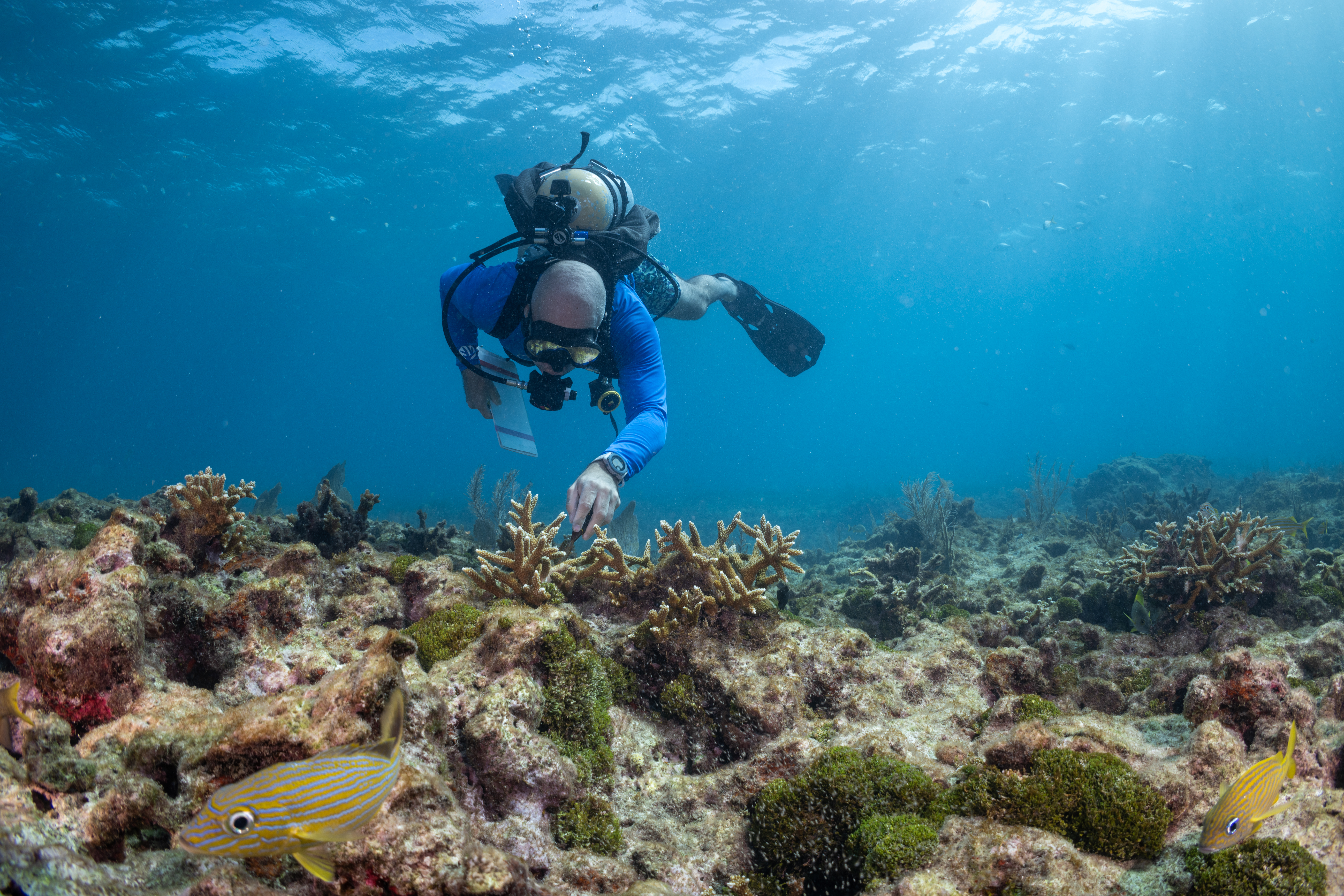
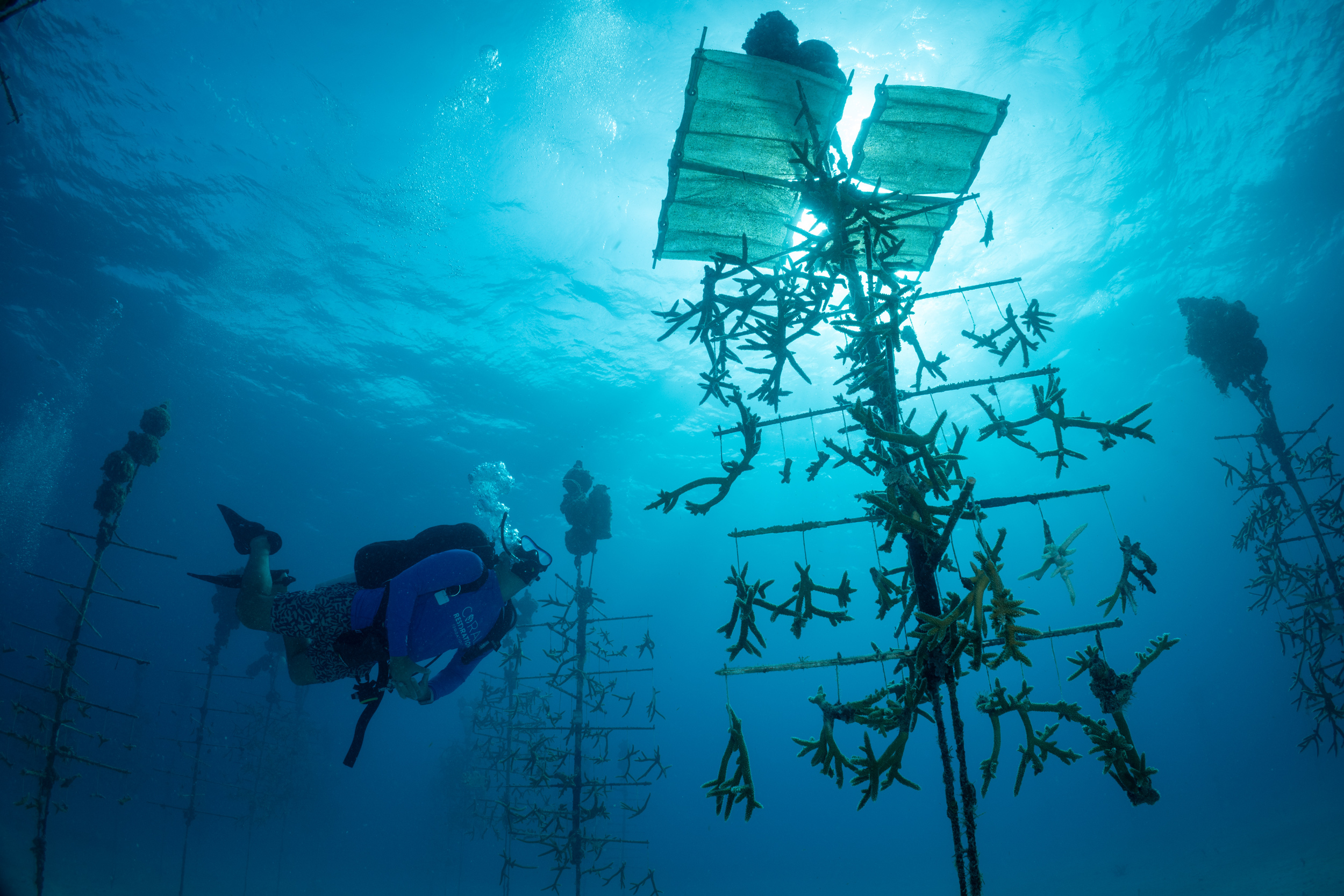
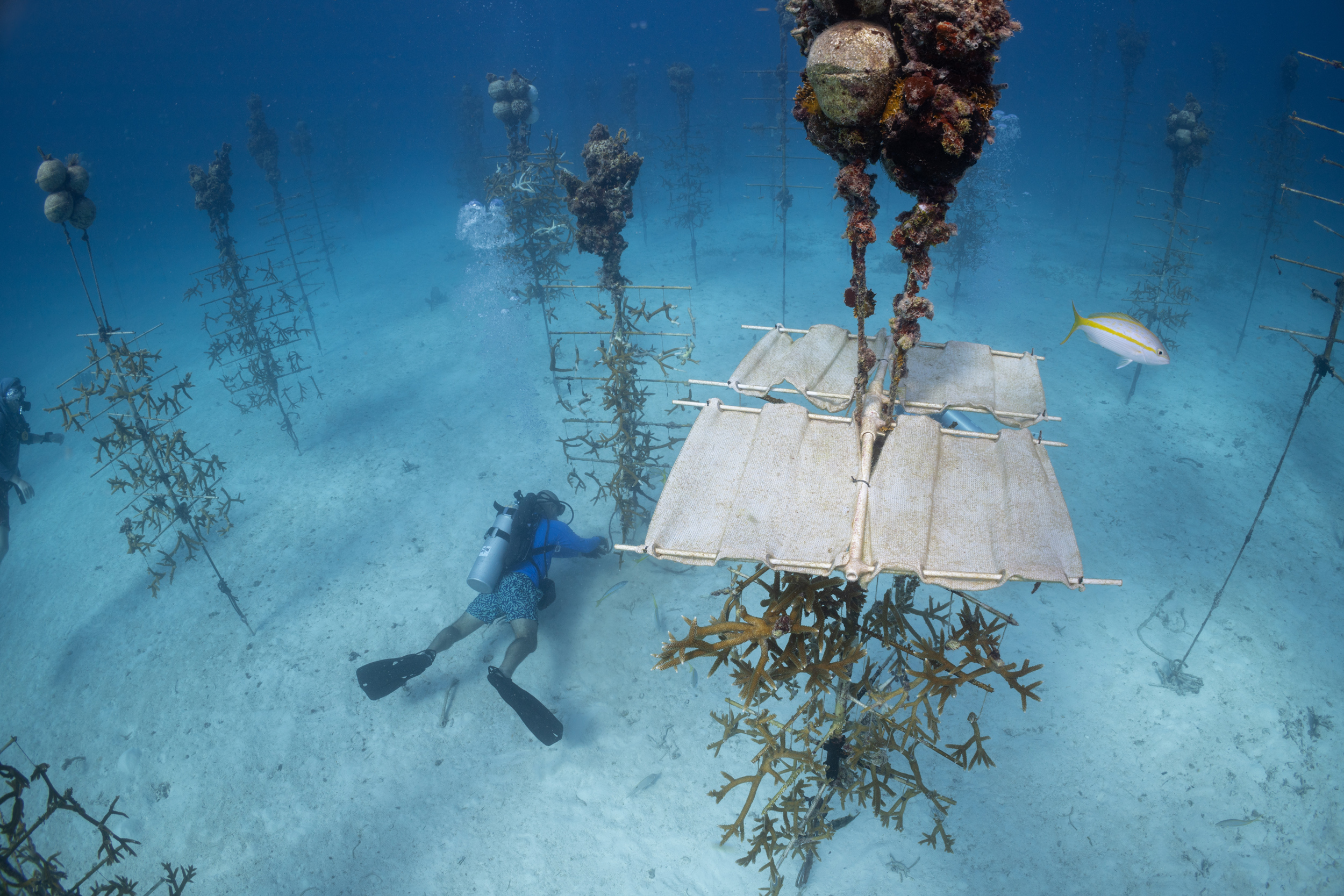












_(720p).jpg)


 OFFICIAL HD MUSIC VIDEO.jpg)
.jpg)



























































































